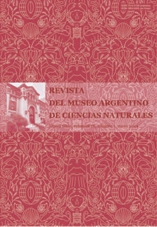LLuvia polínica en selvas montanas de la provincia de Tucumán, Argentina
Resumen
Pollen rain in mountain forests of Tucumán Province, Argentina. This study is referred to
water dynamics in the mountain forests of Tucumán Province, (Argentina) started in 2002 at the Instituto de
Ecologia of the Fundación Miguel Lillo. The place selected was the Toma del Río Horqueta, Reserva de La
Florida (Dept. Monteros) over 1300m.s.l. A pluviometer, considered as a device similar to a captator Tauber, was
used in order to measure water accumulated twice, or sometimes once a month. Water gathered during a year
(July 2004 - June 2005) was centrifugated and its sediment was processed according to conventional methods in
order to ascertain the content of pollen rain in the mountain forests. More than 50 taxa were identified showing
the natural vegetation of the area. A pollen calendar was elaborated with these data. Two periods of significant
pollen contribution were observed. The first period, in September, showed different pollen types among wich
the following arboreal species predominated: Alnus acuminatus, Juglans australis, Polylepis australis, Prunus
tucumanensis, Parapiptadenia excelsa, Celtis sp. and Myrtaceae. The second period, in December, was
characterized by a high percentage of Ulmaceae. A third period, although less important was also observed in
April, with the dominance of Asteraceae. Other species appeared in small quantities according to their time of
blossom.
water dynamics in the mountain forests of Tucumán Province, (Argentina) started in 2002 at the Instituto de
Ecologia of the Fundación Miguel Lillo. The place selected was the Toma del Río Horqueta, Reserva de La
Florida (Dept. Monteros) over 1300m.s.l. A pluviometer, considered as a device similar to a captator Tauber, was
used in order to measure water accumulated twice, or sometimes once a month. Water gathered during a year
(July 2004 - June 2005) was centrifugated and its sediment was processed according to conventional methods in
order to ascertain the content of pollen rain in the mountain forests. More than 50 taxa were identified showing
the natural vegetation of the area. A pollen calendar was elaborated with these data. Two periods of significant
pollen contribution were observed. The first period, in September, showed different pollen types among wich
the following arboreal species predominated: Alnus acuminatus, Juglans australis, Polylepis australis, Prunus
tucumanensis, Parapiptadenia excelsa, Celtis sp. and Myrtaceae. The second period, in December, was
characterized by a high percentage of Ulmaceae. A third period, although less important was also observed in
April, with the dominance of Asteraceae. Other species appeared in small quantities according to their time of
blossom.
Texto completo:
PDFEnlaces refback
- No hay ningún enlace refback.

This work is licensed under a Creative Commons Attribution 3.0 License.

